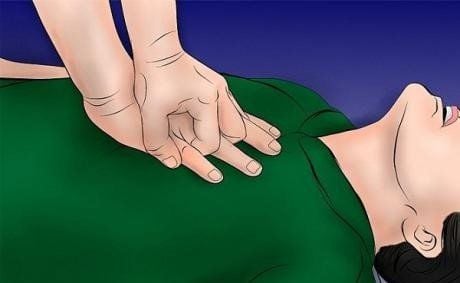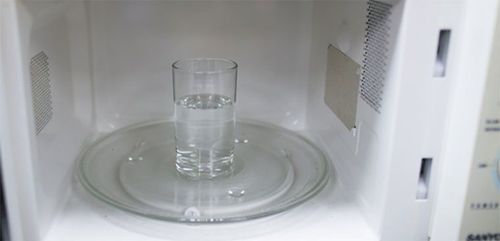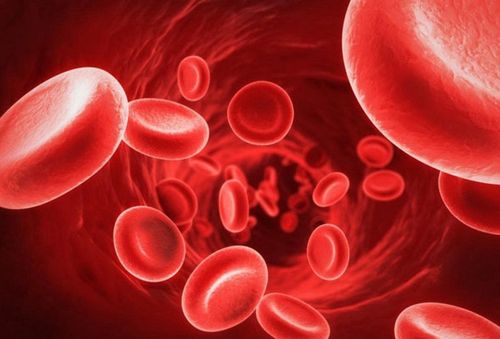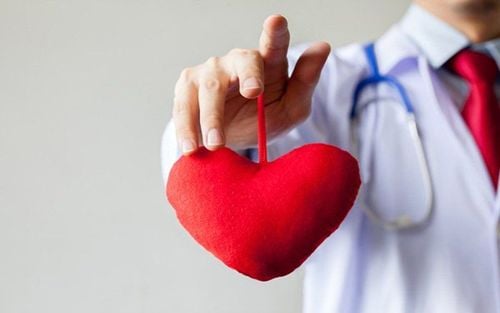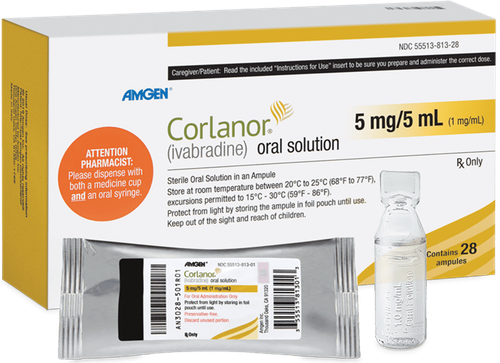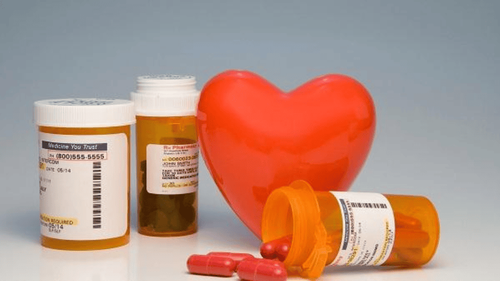This is an automatically translated article.
The article was professionally consulted by Specialist Doctor I Huynh Kim Long - Emergency Resuscitation Doctor - Emergency Resuscitation Department - Vinmec Da Nang International General Hospital. Dr. Huynh Kim Long has extensive experience in the treatment of Resuscitation - Emergency and Acute Stroke in adults.Vital signs are physical signs that the patient is alive, including criteria such as heart rate, breathing rate, temperature, and blood pressure. These signs help the doctor evaluate the functional parameters of the patient's body.
1. What are vital signs?
Vital signs (also known as Vital signs) are a group of 4-6 most important signs, indicating the vital (life-sustaining) state of the body. Normally, there are 4 main vital signs: temperature, pulse, blood pressure and breathing rate. In addition, many doctors also mention another sign, which is the blood oxygen saturation index (SpO2).These are signs that indicate the functioning of the organs, accurately reflect the physiological function of the patient's body, as well as identify possible diseases and show the progress of the disease. core. A person's normal vital signs range varies with weight, sex, age, overall health, and environmental conditions.
Vital signs are maintained at a certain value to sustain human life. If these values change, beyond the normal range will cause other functions in the human body to become imbalanced and cause disease, which can lead to death.
Monitoring vital signs will help detect unusual problems of the patient. In addition, changes in physiological status, physical, psychological, environmental responses, etc. all affect vital signs. These changes can happen suddenly or last a long time. Therefore, any change in vital signs in a patient needs to be reported to the doctor for timely intervention.
2. The vital signs of the human body

2.1 Temperature
Humans are endothermic animals, so ambient temperature does not affect body temperature much; The central temperature is the temperature in organs such as liver, brain, internal organs, etc., which is stable at 37°C; Peripheral temperature is the temperature of the skin outside the body, which can vary with the ambient temperature and is usually lower than the core temperature; Each person's body temperature is balanced by two processes of heat generation and heat loss. Thermogenesis is due to metabolism (ie, chemical reactions of cells), including vasoconstriction, muscle contraction, muscle twitching, movement, metabolism of substances, and endocrine system activity. Heat loss is the physical process of the body in contact with the environment, heat loss through the skin, breathing, perspiration, peripheral vasodilation, nerve suppression, reduction in circulating volume; Body temperature is also controlled by the hypothalamus and remains within narrow limits.
2.2 Breathing rate
Respiration is the process of exchanging O2 and CO2 between the body and the outside environment. Respiration consists of 2 movements: inhalation and exhalation; The organs involved in the respiratory process include the diaphragm, intercostal muscles, sternocleidomastoid, trapezius,...; The respiratory center in the medulla oblongata is responsible for regulating the respiratory function of the body.
2.3 Circuit
Pulse is the rhythmic bouncing in accordance with the heart rate when the hand is placed on the artery due to the elasticity of the blood vessels. Usually, the location of the common artery is located in the wrist (radial pulse) or in the groin, neck area... Taking pulse is also considered a method of calculating the number of heartbeats. However, the pulse does not always coincide with the heart rhythm, often seen in some heart rhythm disorders such as atrial fibrillation, extrasystoles...
2.4 Blood pressure
Blood pressure is the pressure of blood on the walls of the arteries. During systole, the blood pressure in the arteries is at its highest, called the systolic blood pressure (systolic blood pressure). During diastole, the blood pressure in the arteries is at its lowest, called the diastolic pressure (diastolic pressure). The factors that make up blood pressure include:The force of contraction of the heart; Elasticity of the arteries; Peripheral resistance (blood volume, blood viscosity and vascular resistance); Neurological factors.
3. Factors affecting vital signs
Physiological factors: Age, sex; exercise habits, hyperthermia, psychology (anxiety, fear, emotion); Use of drugs: Antiarrhythmic drugs, vasodilators slow the pulse; high-dose painkillers that increase the pulse; anesthetics that slow the pulse; stimulant drugs; heart medication; Pathological factors: Cardiovascular disease, respiratory disease, emergency cases, ...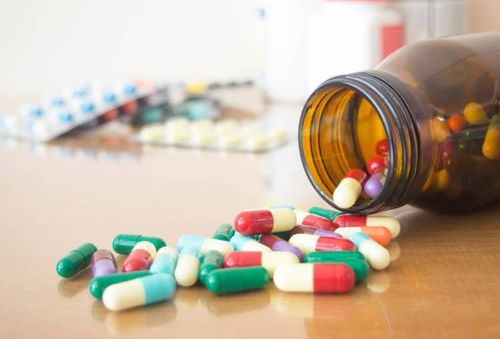
4. How to measure vital signs?
4.1 Purpose
4.1 Purpose Periodic health check-up; Provide information to support disease diagnosis; Monitor disease status and disease progression; Monitoring the results of treatment and care; Detect complications of the disease; Conclusion of patient survival.4.2 Indication
Periodic health checks; When the patient is newly admitted to the hospital, when the patient is transferred to or discharged from the hospital; When the patient is hospitalized: monitor vital signs twice a day; Patients before and after surgery, do some procedures such as infusion, puncture, ... Before and after taking some drugs affecting breathing, cardiovascular, controlling body temperature such as sedatives, reducing drugs. pain, heart support; The patient has physical changes: coma, confusion, pain, defecation, ... When prescribed by the doctor; Handing over patients between shifts; Cases that need to be evaluated for circulatory and respiratory function such as perfusion, blood transfusion, lumbar puncture, pleural puncture, hemodialysis,...
4.3 Rules for measuring vital signs
For people who are hospitalized: Monitor twice a day in the morning and afternoon, even if the patient has stable vital signs. In case the patient's condition is severe, it is necessary to follow up more times, according to the doctor's instructions; Check measuring instruments before measuring; Have the patient rest in bed for 10-15 minutes before measuring; Do not perform other procedures while taking vital signs; Notify the doctor if there are abnormal signs when measuring; Record results honestly and accurately.
4.4 Things to do when measuring vital signs
Measure temperature: Measure body temperature in the mouth, armpit and anus according to the instructions; Count the pulse: By taking the pulse according to the standard procedure, count the pulse for 30 seconds if the pulse is regular or 1 minute if the pulse is irregular; Counting breaths: Put your hands like when taking a pulse, count for 1 minute; Blood pressure measurement: Measure on the patient's arm or thigh.
5. Stats show stable and unstable vital signs
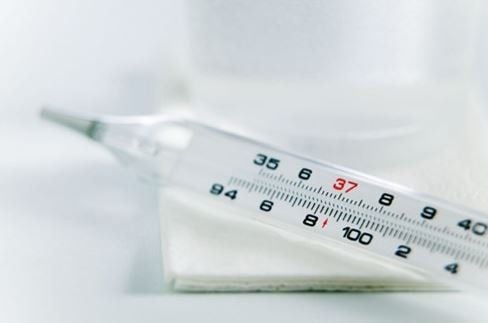
5.1 Temperature
Normal adult temperature is 37°C = 98.6°F; The normal range of temperature is 36.1 - 37.5°C; The temperature in the anus is 37°C, in the armpit is 36.5°C; Body temperature is affected by climate, age, movement, physiological period (pregnancy, menstruation); Fever when the body temperature rises above 37.5°C. Mild fever when the body temperature is at 37.5 - 38°C, moderate fever when the patient's body temperature is at 38°C -39°C, high fever if the patient has a body temperature between 39 - 40°C and a high fever if the body temperature is above 40°C; Hypothermia when the body temperature drops below 36°C, is common in the elderly and weak, premature babies or due to serious metabolic disorders such as diabetes, cirrhosis, malnutrition, etc.
5.2 Breathing rate
Normal breathing is smooth and regular, adults are at 16-20 breaths/minute, infants 40-60 times/minute, children under 6 months are 35-40 times/minute, children 7-12 months are 30-35 times/minute, 2 - 3 year old children is 25 - 30 times/minute, 4 - 6 years old is 20 - 25 times/minute and 7 - 15 year old is 18 - 20 times/minute; Rapid breathing when working, exercising, sunny, emotional or high fever; Slow breathing when nervous tension, qigong practice, self-will or due to traumatic brain injury inhibits the respiratory center causing slow breathing; Shortness of breath and some arrhythmias.
5.3 Circuit
Normal pulse in a newborn is 120-140 beats/min, a 1-year-old child is 100-130 beats/min, a 5-6-year-old child is 90-100 beats/minute, and a 10-15-year-old child is 80-90 times/minute, adults are 70-80 times/minute and elderly people are 60-70 times/minute; The pulse beats fast or slow depending on the time (morning or afternoon), psychological state, body activity, age, gender, eating habits, taking drugs; Tachycardia over 100 beats/min is seen in patients with infections, basedow's disease or taking Atropin sulfate,... Slow pulse less than 60 beats/min is seen in people with heart disease, digitalis poisoning,...
5.4 Blood pressure
The normal range of systolic blood pressure is 90 - 140 mmHg, of diastolic blood pressure is 60 - 90 mmHg; Physiological factors affecting blood pressure include age, sex, movement, emotions, body weight, medication,... High blood pressure: Systolic blood pressure readings over 140mmHg, blood pressure Diastolic blood pressure above 90mmHg, common in people with cardiovascular, renal, endocrine diseases... Low blood pressure: Systolic blood pressure readings below 90mmHg, diastolic blood pressure below 60mmHg, common in patients with dehydration or dehydration a lot of blood,... Trapped blood pressure: Effectively keeping systolic and diastolic blood pressure no more than 20mmHg. Regular monitoring of vital signs plays an important role, helping doctors to detect abnormalities of the patient's body early for timely and effective treatment.
Periodic health check is one of the ways to early recognize and prevent disease, especially for each person. Currently, Vinmec International General Hospital has general health checkup packages suitable for each age, gender and individual needs of customers with a reasonable price policy, including:
Health checkup package general Vip Special general health checkup package Standard general health checkup package Patient's examination results will be returned to your home. After receiving the results of the general health examination, if you detect diseases that require intensive examination and treatment, you can use services from other specialties at the Hospital with quality treatment and services. outstanding customer service.
Please dial HOTLINE for more information or register for an appointment HERE. Download MyVinmec app to make appointments faster and to manage your bookings easily.





